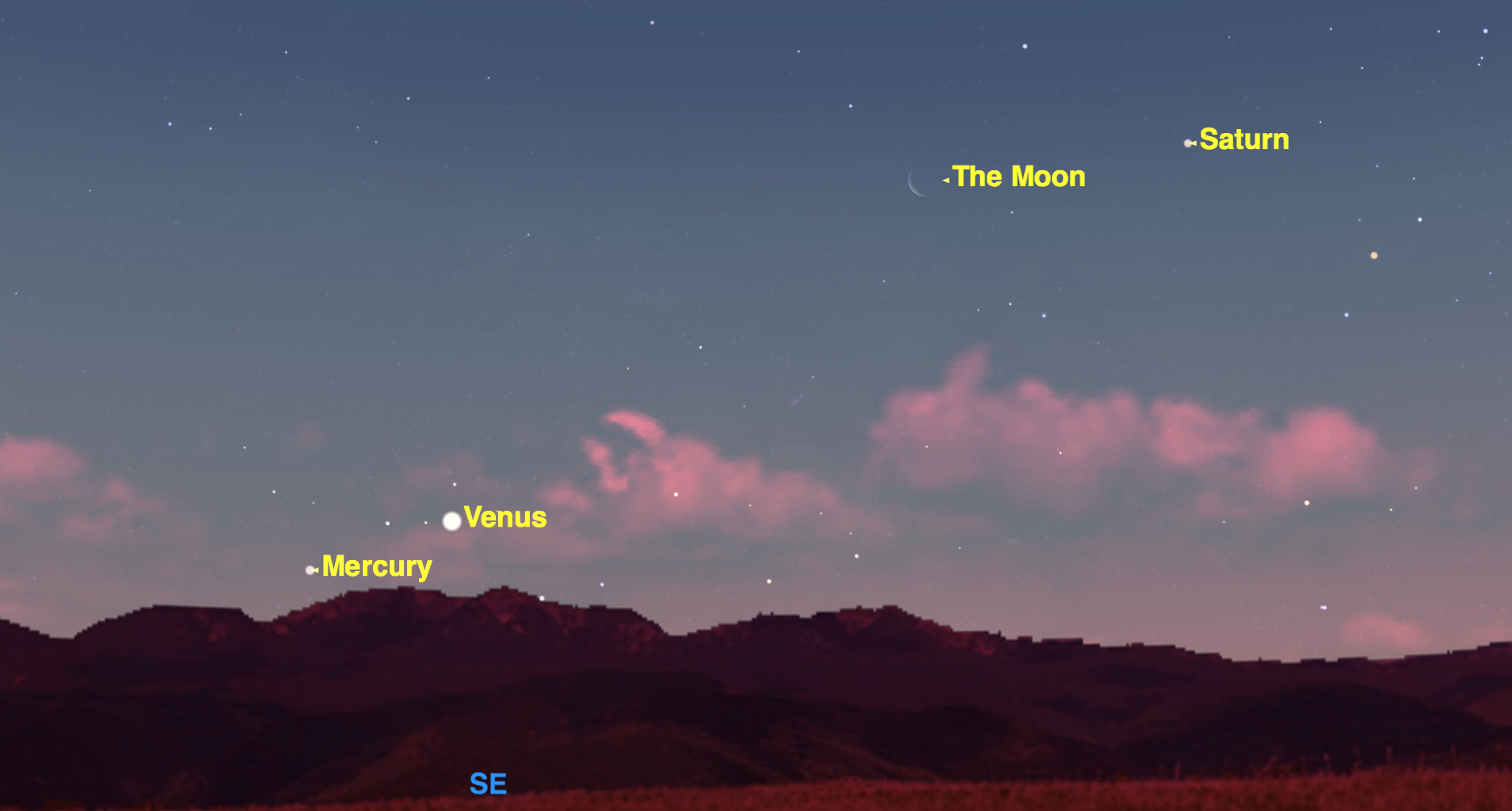Crescent Moon Joins Predawn 'Planet Parade' Thursday

For the last couple of weeks, early risers have been enjoying the "parade of the planets," as all of the naked-eye planets gather in the dawn sky. Mercury, Venus, Saturn, Mars and Jupiter have been strung like glistening jewels across the southern sky.
For the next few mornings, the waning crescent moon will join the array, as Mercury moves to its best position this month.
On Thursday morning (Feb. 4), the moon will be about one-third of the way from Saturn to Venus. Venus is, as always, the most brilliant object in the predawn sky. Saturn is less bright, but gradually coming into its own as it moves away from behind the sun. If you have a telescope, be sure to check out Saturn's famous rings, now tilted toward Earth almost as far as they can get, and its surrounding cluster of tiny moons. [5 Dawn Planets and a Dusk Comet: Feb. 2016 Skywatching Video]
By Friday morning (Feb. 5), the moon will have moved so that is now two-thirds of the way from Saturn to Venus, and its crescent will have shrunk noticeably. Now would be a good time to look for "earthshine" — light reflected from Earth shining on the portion of the moon not in direct sunlight. Binoculars will help make this visible.

On Saturday morning (Feb. 6), the moon will have moved past Venus, and will be forming a tight triangular group with Venus and Mercury. This provides a great opportunity to spot tiny Mercury, the smallest of the planets and one that is rarely seen because of its proximity to the sun.
Mercury is easiest to see about half an hour before local sunrise. Use binoculars to first pick it up; you should then be able to see it with your naked eye. It sometimes helps to use "averted vision" — look slightly to one side of where Mercury is located, putting it on the more sensitive portion of your eye's retina.
These close conjunctions make for excellent photo opportunities, and, as always, we welcome your images of the planets of dawn. Use a telephoto lens and try to frame them with a nearby tree or building.
Breaking space news, the latest updates on rocket launches, skywatching events and more!
Editor's note: If you capture a stunning view of the moon, a planet or any other celestial sight and would like to share it with us and our news partners, you can send in images and comments in to managing editor Tariq Malik at: spacephotos@space.com.
This article was provided to Space.com by Simulation Curriculum, the leader in space science curriculum solutions and the makers of Starry Night and SkySafari. Follow Starry Night on Twitter @StarryNightEdu. Follow us @Spacedotcom, Facebook or Google+. Originally published on Space.com.
Join our Space Forums to keep talking space on the latest missions, night sky and more! And if you have a news tip, correction or comment, let us know at: community@space.com.

Geoff Gaherty was Space.com's Night Sky columnist and in partnership with Starry Night software and a dedicated amateur astronomer who sought to share the wonders of the night sky with the world. Based in Canada, Geoff studied mathematics and physics at McGill University and earned a Ph.D. in anthropology from the University of Toronto, all while pursuing a passion for the night sky and serving as an astronomy communicator. He credited a partial solar eclipse observed in 1946 (at age 5) and his 1957 sighting of the Comet Arend-Roland as a teenager for sparking his interest in amateur astronomy. In 2008, Geoff won the Chant Medal from the Royal Astronomical Society of Canada, an award given to a Canadian amateur astronomer in recognition of their lifetime achievements. Sadly, Geoff passed away July 7, 2016 due to complications from a kidney transplant, but his legacy continues at Starry Night.

